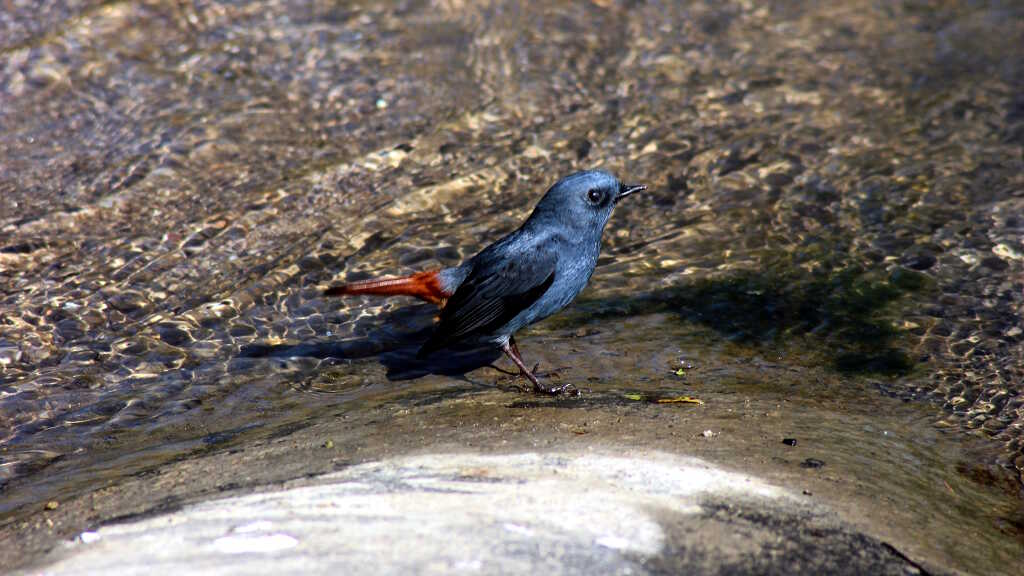
Rhyacornis fuliginosus (Plumbeous water redstart)
The Plumbeous redstart (Rhyacornis fuliginosus) is a charming riverine bird commonly found in the fast-flowing streams and rocky riverbanks of the Great Himalayan National Park. This small bird is a delight for birdwatchers, often seen flitting from rock to rock or hovering briefly over water in search of insects.
Appearance and Behavior
The male Plumbeous redstart is slate-blue with a distinctive rusty-red tail that it constantly fans and flicks—an endearing trait that makes it easy to spot. Females are more subdued in color, with greyish plumage and subtle patterning. Both sexes display agile aerial movements, capturing insects mid-flight with impressive precision.
This species prefers cool, shaded environments and is rarely seen far from running water. It is territorial and often perches on exposed rocks, issuing soft calls and performing quick, darting flights. During the breeding season, males become especially vocal and display acrobatic flight patterns to attract females.
| Common name | Plumbeous Water Redstart |
| Scientific name | Rhyacornis fuliginosus |
| Family | Muscicapidae |
| Description | The plumbeous water redstart is typically 14 centimeters long in total, with an average weight of 22 grams for males and 18.8 grams for females. The male birds are slate blue in colour with a tail that is rusty red. On the other hand, female birds are pale grey and feature a white rump. It is found throughout the Great Himalayan National park along the mountain streams and rivers with an altitudinal zone of >1200 m. It is a commonly seen bird. It was seen singly and also in pair. It opens and closes its tail intermittently while also wagging it. Male is bluish grey with a red tail. The female is grey, mottled with white and base of her tail is also white. |
Habitat and Distribution in GHNP
In the Great Himalayan National Park, the Plumbeous redstart thrives along mountain streams and glacial rivers from lower elevations up to 3,000 meters. The abundance of aquatic insect life in these pristine waters provides an ideal feeding ground. GHNP offers a protected refuge where these birds can nest, feed, and raise their young in relative safety, free from urban disruption.
Conservation and Significance
Although the Plumbeous redstart is classified as Least Concern by the IUCN, its specialized habitat means it could be vulnerable to water pollution or habitat degradation. Protecting mountain rivers and streams is essential for its continued survival. The species plays an important role in insect population control and reflects the overall health of freshwater ecosystems in the park.



